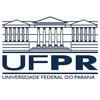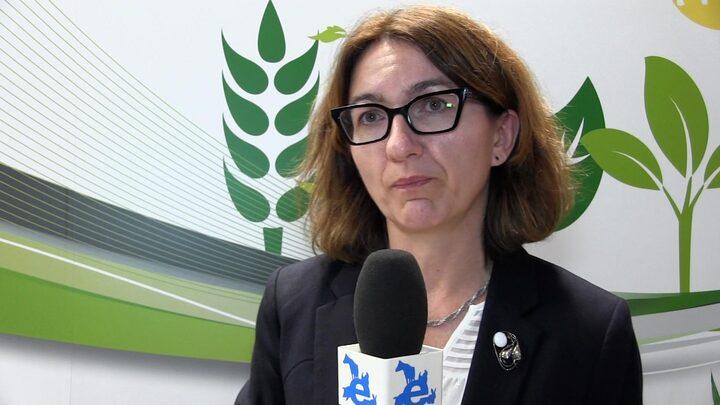Explore all the information on
Poultry litter
Poultry litter is the mix of bedding material, manure and feathers that result from intensive poultry production. This includes litter from meat chickens (broilers), egg-laying chickens (layers) kept under barn conditions, turkeys, ducks and quails. Poultry bedding material consists of wood shavings, pine straw, peanut hulls, and other absorbent dry low-cost materials and is another possible source of pathogenic contamination for poultry. It is generally recommended that farmers keep litter as dry as possible, replace the top layer of the litter with a new one, and apply acid-based litter amendments. Keeping litter dry is a critical part of overall management on every poultry farm. Litter conditions influence bird performance, which in turn affects profits of growers and integrators. Dry litter helps control ammonia levels, provides a healthy flock environment, and reduces condemnations due to hock and footpad burns and breast blisters.
Casey Ritz (University of Georgia) discussed the importance of effective litter management, during IPPE 2019 in Atlanta, USA....
Comments : 0
Recommendations: 1
Todd Applegate (University of Georgia) explained the findings of this research and also talked about the use of recycled litter, during IPPE 2019 in Atlanta, USA....
Comments : 0
Recommendations: 4
INTRODUCTION Litter is a mixture of excreta, litter substrate (e.g., wood shavings, rice hulls, peanut shells), as well as soil, feathers, and other components. It is used to cover broiler house floors to absorb excreta and provide a comfortable surface for the birds (Kelley et al., 1996). Broiler litter from the first flock is typically reused for several consecutive flocks (up to 14 times) (Roll et al., 2011) for economic reasons, and also to reduce the organic load of...
Comments : 0
Recommendations: 0
Economical organic material like rice husk, sawdust, pine shaving, wood shavings, pea nuts hulls, straw, coconut husks & other dry-absorbent are used as bedding material / litter in poultry operation. Though materials are selected keeping in mind the economics & easy availability which are regional based, the cost of above mentioned materials for broiler chicken bedding has risen considerably over the last few...
Comments : 15
Recommendations: 0
Tom Tabler (Mississippi State University) explained how litter quality, ammonia levels and other factors can help in avoiding the appearance of this disease, during IPPE 2018 in Atlanta, USA....
Comments : 11
Recommendations: 4
Introduction Many parameters such as temperature and humidity affect environmental conditions within a poultry house. Heat and cold stresses, wet litter and ammonia emissions are among the extreme conditions adversely affecting the poultry performance (Al-Homidan et al., 2003). The two later factors are associated with another factor termed stocking density as a debating issue in intensive poultry production (Dozier et al., 2006; Estevez, 2007). Increasing stocking density is an...
Comments : 0
Recommendations: 1
Joseph Hess (Auburn University) explained how this method works and the advantages it provides for the prevention of poultry diseases, during IPPE 2018 in Atlanta, USA....
Comments : 6
Recommendations: 0
Brian Fairchild (University of Georgia) explained the findings of his research on the correlation of litter moisture results between the traditional drying method and a commercial moisture meter, during IPPE 2018 in Atlanta, USA....
Comments : 2
Recommendations: 7
Introduction Agricultural dust is generated in animal production facilities (Cambra-Lopez et al., 2010). Inhalation exposure to agricultural dust induces pulmonary inflammation and can lead to the development of chronic respiratory diseases (Palmberg et al., 1998; Redente and Massengale, 2006; Poole and Romberger, 2012). Several studies have demonstrated that agricultural workers, particularly poultry workers, have a...
Comments : 1
Recommendations: 0
Introduction The poultry industry has been able to develop high-level technologies in these more than one hundred years of existence, reaching high zootechnical results. These advances have been obtained through a lot of financial investment in ambience, making the handling work more efficient. However, to offset this economic contribution, the producers were taken to increase the population density in aviary, mainly broiler chickens, currently one of the most discussed and...
Comments : 0
Recommendations: 2
Efficacy of using Silvafeed® Nutri P plant extract to improve poultry feet quality and welfare Footpad dermatitis (FPD) has become a major issue for broiler industry in recent years. The development of necrotic lesions on the feet can strongly impair the welfare of poultry. Moreover, it can affect animal productivity and the quality of chicken feet, causing important economic losses (Mayne et al,...
Comments : 4
Recommendations: 2
1. Introduction Modern American agriculture has become successful in producing food security despite having less than 1% of the US population actually listing farming as their occupation [1]. The US Census of Agriculture estimates that 8.6 billion broiler chickens, 107 million turkeys, 96 million beef cattle, and 68 million pigs were sold for meat in 2007 with an additional 350 million laying hens and 79 million dairy cows producing eggs and milk [1]. Eighteen to 36 kg of manure...
Comments : 0
Recommendations: 3
Introduction Measures need to be taken in the Netherlands to reduce emissions of fine dust (PM10 and PM2.5) from major emission sources, including poultry houses with litter, to comply with European standards on maximum fine dust concentrations in the ambient air. The contribution of animal houses, especially poultry houses, to the total primary emission of PM in the Netherlands is estimated to be approximately 20% (CBS...
Comments : 0
Recommendations: 0
Casey Ritz, Professor and Extension Specialist at the University of Georgia, talked about techniques and management practices to comply with regulations in processing poultry litter, during IPPE 2017 in Atlanta, USA....
Comments : 0
Recommendations: 0
.jpg&w=3840&q=75)

Jonathan Cade comments on his new role as Chairman of the U.S. Poultry & Egg Association
Suggested link
Joseph Hess, Professor and Extension Specialist at Auburn University, talked about moisture in poultry litter, water quality, and environmental concerns, during IPPE 2017 in Atlanta, USA....
Comments : 0
Recommendations: 1
This publication outlines the information needed to develop a Comprehensive Nutrient Management Plan (CNMP) for dry poultry litter operations. The information collected from this checklist can be used in the CNMP Generator computer software developed by the University of Georgia Cooperative Extension. CNMP Generator software is available from county Extension agents and other state agricultural agency personnel. Completing a CNMP using the...
Comments : 0
Recommendations: 1
Good litter management and proper ventilation are critical to preventing footpad dermatitis (FPD) and maintaining health in poultry flocks. Footpad dermatitis first became an issue for the poultry industry in the 1980s, but it surely existed long before that time. The condition is known by a variety of names, including pododermatitis and contact dermatitis. It is characterized by inflammation and ulcers on the footpad and toes. The sores can be shallow or deep....
Comments : 4
Recommendations: 1
A free workshop will be offered to International Production & Processing Expo (IPPE) attendees on the Toxic Release Inventory (TRI) program. The U.S. Poultry & Egg Association (USPOULTRY) is sponsoring this free session to provide a basic overview of TRI reporting as well as offer greater details on intricate aspects of the reporting requirements that are routinely confusing and ambiguous due to the lack of endorsed guidance.
This program will be held from 8 – 10:00...
Comments : 0
Recommendations: 0
Poultry manure fertilizer contains all the essential nutrients required for crop production, and its value as an organic fertilizer and a source of plant nutrients has been recognized for centuries. Even with its beneficial effects on plant growth, however, manure constitutes only a small percentage of the nutrients applied to cropland when compared to commercial fertilizer. Poultry manure fertilizer is not used to its maximum...
Comments : 2
Recommendations: 0
1. Introduction The occurrence of ‘wet litter’ in meat chicken sheds is associated with concerns regarding animal welfare, flock health, food safety, environmental impacts and reductions in production efficiency. Mitigating wet litter will only be achieved when there is thorough understanding of the multidimensional causal factors. This will require a multidisciplinary approach to understand the hydrology in...
Comments : 21
Recommendations: 1


















.jpg&w=3840&q=75)

















